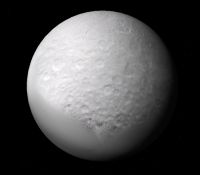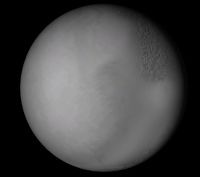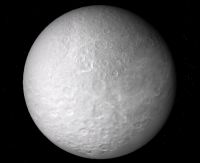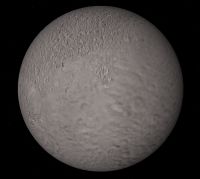Difference between revisions of "Rhea"
Jump to navigation
Jump to search
(Added content.) |
(Added table item.) |
||
| Line 57: | Line 57: | ||
|- | |- | ||
!Add-on!!Source!!Version!!Author!!Type!!Release Date!!Compatibility!!Wiki article | !Add-on!!Source!!Version!!Author!!Type!!Release Date!!Compatibility!!Wiki article | ||
| + | |- | ||
| + | |[https://www.orbiter-forum.com/resources/the-outer-planets-050223-update.2483/ The Outer Planets 050223 Update]||O-F Resources||2005-02-23||VF2_Rolf||Scenery||23 February 2005|||| | ||
|- | |- | ||
|[https://library.avsim.net/esearch.php?DLID=&Name=&FileName=outerplanets-050125.zip&Author=&CatID=root The Outer Planets 050125]||AVSIM||050125||Rolf Keibel<br>Tony Dunn||Scenery||26 January 2005||Orbiter 2005-P1|| | |[https://library.avsim.net/esearch.php?DLID=&Name=&FileName=outerplanets-050125.zip&Author=&CatID=root The Outer Planets 050125]||AVSIM||050125||Rolf Keibel<br>Tony Dunn||Scenery||26 January 2005||Orbiter 2005-P1|| | ||
Revision as of 03:25, 5 October 2024
| Rhea | |
|---|---|
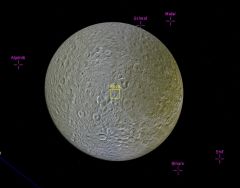
| |
| Rhea in Orbiter 2016 with D3D9 client | |
| Designation | |
| Name | Rhea |
| Reference body | Saturn |
| Planetary mean orbits | |
| Epoch | 2005.41409993155 |
| Semimajor axis (a) | 527225476.502164 m |
| Eccentricity (e) | 0.000909561682184622 |
| Inclination (i) | 27.94971857° (0.487814614025395 radian) |
| Longitude of the ascending node (LAN, ☊) | 168.8079837° (2.94625511954542 radian) |
| Longitude of periapsis (ϖ) | 360.9692475° (6.30010186733614 radian) |
| Mean longitude (L) | 448.7342263° (7.83188971564837 radian) |
| Selected physical parameters | |
| Mean radius | 764000 km |
| Mass | 2.49×1021 kg |
| Rotation elements | |
| SidRotPeriod | 390411 seconds (108.4475 hours or 4.5 days) |
| SidRotOffset | 0 |
| Obliqutiy | 0.4895 |
| LAN | 6.09808 |
| Note | *Elements given are from Rhea.cfg (Orbiter 2005P1) |
Rhea is the ninth-largest moon in the Solar System and the second-largest moon of Saturn. Rhea was discovered by Giovanni Domenico Cassini on 23 December 1672 about the same time he discovered Dione, Iapetus, and Tethys, but the name Rhea referred to by John Herschel stuck.
Rhea in Orbiter
Rhea was first introduced in Orbiter with the release of Orbiter 2002 in April 2002.
| <center?Orbiter versions and add-ons which include Rhea | |||||||
| Add-on | Source | Version | Author | Type | Release Date | Compatibility | Wiki article |
|---|---|---|---|---|---|---|---|
| The Outer Planets 050223 Update | O-F Resources | 2005-02-23 | VF2_Rolf | Scenery | 23 February 2005 | ||
| The Outer Planets 050125 | AVSIM | 050125 | Rolf Keibel Tony Dunn |
Scenery | 26 January 2005 | Orbiter 2005-P1 | |
| 2005 (with P1 patch files) | O-F Resources | 050216 | martins | Orbiter Download | 16 February 2005 | Orbiter 2005 | |
| Orbiter 2003-P2 | O-F Resources | 031217 | martins | Orbiter Download | 17 December 2003 | Orbiter 2003-P2 | |
| Orbiter 2003-P1 | O-F Resources | 031105 | martins | Orbiter Download | 5 November 2003 | ||
| Moons of Saturn Part 3 | AVSIM | Rolf Keibel | Scenery | 19 October 2002 | |||
| Orbiter 2002 | O-F Resources | 020419 | martins | Orbiter Download | 19 April 2002 | Orbiter 2002 | |
See also
Gallery
Rhea as seen by the Cassini spacecraft on 26 November 2005
From Wikimedia Commons
| edit The Solar System | |
|---|---|
| Central star |
Sun (Sol) |
| Planets |
Mercury - Venus - Earth - Mars - Jupiter - Saturn - Uranus - Neptune |
| Natural satellites |
Moon - Phobos - Deimos - Io - Europa - Ganymede - Titan - more... |
| Add-ons |
Planets - Dwarf Planets - Small objects - Natural satellites - Alternative star systems |
 | This natural satellite related article is a stub. You can help Orbiterwiki by expanding it. |
